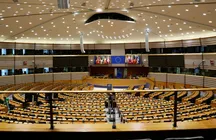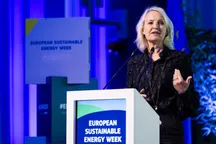 The Food and Agriculture Organization of the United Nations (FAO) has welcomed the Global Biodiversity Framework Fund to provide financial support to developing countries in their ability to protect, restore and ensure the sustainable use of natural resources.
The Food and Agriculture Organization of the United Nations (FAO) has welcomed the Global Biodiversity Framework Fund to provide financial support to developing countries in their ability to protect, restore and ensure the sustainable use of natural resources.
The FAO has welcomed the launch of the Global Biodiversity Framework Fund during the Seventh Global Environmental Facility (GEF) Assembly in Vancouver. The meeting, held from 22 to 26 August, brought together leaders from 185 countries to discuss solutions for a healthy planet and take stock of the 2030 goals.
The GEF serves as a financial mechanism for several environmental conventions, including the Convention on Biological Diversity (CBD) which adopted the Kunming-Montreal Global Biodiversity Framework.
The Framework includes four long-term goals for 2050:
- Goal A: The integrity, connectivity and resilience of all ecosystems are maintained, enhanced, or restored, with a particular attention to the threatened species.
- Goal B: Sustainable management of biodiversity with a view to achieving a sustainable development by 2050.
- Goal C: It focuses on the monetary and non-monetary benefits of using genetic resources and digital sequence information on genetic resources, in order to contribute to the conservation and sustainable use of biodiversity
- Goal D: It aims to ensure that all Parties have equal access to adequate means of implementation, financial resources, capacity building and technical and scientific cooperation.
And 23 targets for the period up to 2030 to take urgent action to halt and reverse biodiversity loss, to end pollution, combat climate change, and promote inclusive, locally-led conservation. In particular, there are eight different Action areas that can be identified:
- Reducing threats to biodiversity (from 1 to 8)
- Meeting people’s needs through sustainable use & benefit-sharing (from 9 to 13)
- Tools and solutions for implementation and mainstreaming (from 14 to 23)
The Framework is accompanied by a detailed monitoring framework consisting of a set of agreed indicators for tracking progress towards the Goals and Targets of the Framework. It includes headline indicators which are recommended for national, regional and global monitoring, as well as complementary indicators.
Two countries have announced initial contributions to start its capitalisation: Canada has pledged 200 million Canadian dollars (147 million USD) and the United Kingdom 10 million pounds (13 million USD).
Priority will be given to the world's least developed countries and small island states, which will receive more than a third of the funds, with up to 20 per cent going to projects led by indigenous peoples and local communities.
In adopting the Kunming-Montreal Global Biodiversity Framework, all Parties committed to setting national targets to implement it, while all other actors have been invited to develop and communicate their own commitments.
At the next meeting of the Conference of the Parties, the world will take stock of the targets and commitments that have been set.








